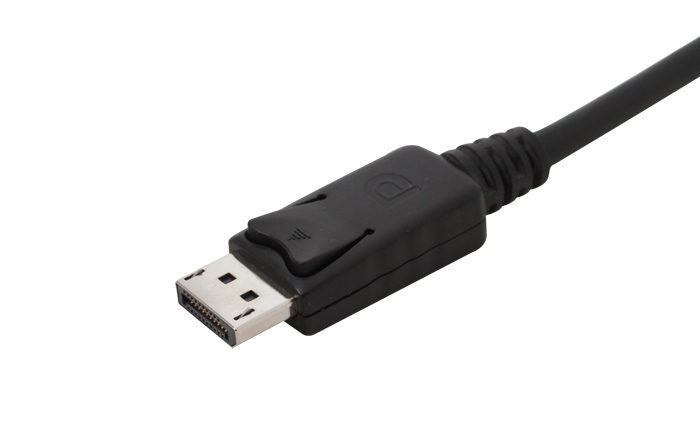Ask most people how they connect their computer monitors or TVs, and the answer will come back the same: HDMI. HDMI cables are the standard because they’re everywhere, the cables are cheap, and pretty much everything supports it. But, as I explain here, HDMI has a dirty little secret. It often carries content protection, and that can be a problem.
When HDMI was new, there was a competitor called DisplayPort that came out at roughly the same time. DisplayPort has been left for dead several times by the media, but here we are in 2023 (almost 2024) and not only can you still get DisplayPort stuff, there are times when you almost have to. Here’s the real reason why DisplayPort refuses to die.
It’s not the copy protection, but…
HDMI was designed as a consumer standard with copy protection baked in pretty much from the start. DisplayPort was designed as a professional standard and yes, it can also carry the exact same copy protection. But much of the time, it doesn’t. It can be a more reliable standard than HDMI for that reason.
It is amazing to me that twenty years after HDCP (copy protection) first became a thing, it’s still a problem sometimes. The arms race between the people who want to copy stuff and the people who don’t want you to copy stuff means that HDCP is always evolving. And sometimes that means things go very wrong very fast. Older TVs may not work with newer equipment. In some cases, older equipment won’t work with newer TVs.
DisplayPort seems to suffer less from this problem. It’s probably because most devices don’t support it anyway. So, those that do are engineered to handle it a little better.
Gamers appreciate DisplayPort
At this point in time, both the latest HDMI and DisplayPort standards support huge video streams. If you have the right hardware and the right cables, you can get 4K at an eye-watering 120 frames per second. Gamers love high refresh rates. They’re easier on the eyes and give you a tiny advantage over others.
If you want to go above 4K, though, you’ll find that DisplayPort still supports higher resolutions and refresh rates. If you want to use a 16K monitor in HDR at 60 frames per second, you’ll need a DisplayPort cable. I’m not sure where you’d get the 16K monitor, but that’s another whole thing.
DisplayPort also makes it easy to have multiple monitors. One DisplayPort cable can carry multiple video streams. Connecting up multiple monitors becomes a lot easier that way.
Macs and Microsoft
Microsoft had a long flirtation with DisplayPort in their Surface Pro devices. At one point, those devices had DisplayPort connectors. The latest Surface Pro 9 doesn’t, though. They now use USB-C for display output.
Macs have used USB-C for display output for several years now. This standard allows you to connect an HDMI or DisplayPort cable as long as it has USB-C on the other end. However, if you want the highest resolution or frame rate, you still might need a DisplayPort cable. It’s just nice to have both options coming out of the same port.
Do you need a DisplayPort cable?
There are a lot of different options for DisplayPort. Like HDMI, there are several different size connectors. You may want to convert from DisplayPort to HDMI or vice versa. (You’ll lose the benefits of using DisplayPort, but the monitor you have might not support it anyway.) The good news is that there’s a great place to get a curated selection of DisplayPort cables and adapters. Shop at Solid Signal for everything you’ll need for DisplayPort, the standard that just won’t die.




